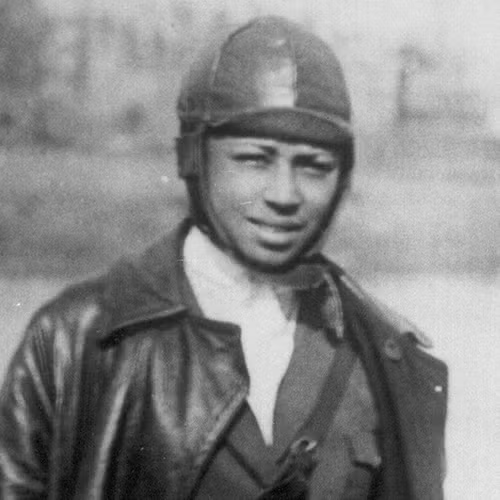
Table of Contents
Who Was Bessie Coleman?
Bessie Coleman was a groundbreaking American aviator, recognized as the first Black woman to earn a pilot’s license. Faced with the barriers of racial discrimination, she sought her training abroad, learning French to enroll at the esteemed Caudron Brothers’ School of Aviation in France. Within just seven months, she successfully obtained her pilot’s license. Specializing in stunt flying and parachuting, Coleman made a name for herself by barnstorming and performing aerial tricks. Her achievements have established her as a pioneering figure for women in aviation.
Early Life, Siblings, and Education
Bessie Coleman was born on January 26, 1892, in Atlanta, Texas, as one of 13 children to Susan and George Coleman, who worked as sharecroppers. Her father, of Native American and African American descent, left the family in pursuit of better opportunities in Oklahoma during Coleman’s childhood. In his absence, her mother worked tirelessly to support the family, while the children contributed to household responsibilities as soon as they were able.
At the age of 12, Coleman began attending the Missionary Baptist Church in Texas. She later pursued higher education at the Oklahoma Colored Agricultural and Normal University (now known as Langston University), though she completed only one term due to financial difficulties.
In 1915, at the age of 23, Coleman relocated to Chicago to live with her brothers and took up work as a manicurist. Shortly after her arrival, she became captivated by the stories of World War I pilots, which ignited her passion for aviation and set her on the path to becoming an aviator.
The First Black Woman Aviator
In 1921, during an era marked by both gender and racial discrimination, Bessie Coleman shattered barriers by becoming the world’s first Black woman to earn a pilot’s license. Facing rejection from flying schools in the United States, she took the initiative to learn French and relocated to France to pursue her aspirations. Within just seven months, Coleman obtained her license from the prestigious Caudron Brothers School of Aviation.
Upon her return to the United States, Coleman envisioned establishing a flying school for African Americans. However, she ultimately specialized in stunt flying and parachuting, earning her living as a barnstormer and aerial performer. In 1922, she made history once again by becoming the first African American woman in the United States to conduct a public flight. Coleman’s achievements not only paved the way for future aviators but also challenged the social norms of her time, inspiring countless individuals to follow their dreams against all odds.
Death
On April 30, 1926, Bessie Coleman tragically lost her life at the young age of 34 in a fatal accident during a rehearsal for an aerial show. Her untimely demise occurred when her aircraft malfunctioned, causing her to fall to her death. Despite her brief life, Coleman remains a pioneering figure in aviation, having broken barriers for women in a predominantly male field. Her legacy continues to inspire generations of aviators and advocates for gender equality in aviation and beyond.
